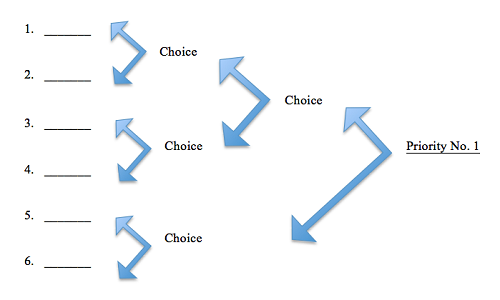Self Application
Life includes both chaos and order. Our lives consist of a continuous series of good and bad experiences as evidenced by the modern concept of biorhythms. This is true whether we are male or female, young or old, and is irrespective of our race or religious convictions. The two interrelated concepts of chaos and order describe the complex nature of our physical universe as one of chaotic order. And we, too, embody chaotic order. In other words, we are ruled alternately, and indiscriminately, by chaos and by order. We cannot get away from this relationship, but rather must somehow learn to deal with it. When our lives are going as planned, we can usually expect chaos to show up at some point, in one form or another. Perhaps it will rain when we want to do some work outside, or perhaps our car will have a flat tire on the way to an evening in town. The important thing is how we meet this chaos and react to it.
According to the findings of chaos theory, times of chaos (i.e., those unplanned, unexpected, and usually unwanted, events that occur to all of us) can be creative. If we look hard, perhaps we can find the new order within the chaos and be better for it.
Coaching Application
When it comes to order or chaos, human individuals tend toward one or the other. When classifying people as one or the other, four factors tend to get merged into one:
- Whether they believe the universe to be ordered
- To what extent they support order in society
- How they conduct their lives
The first step is to realize that your clients did not get overwhelmed at once; it took months, years or even a lifetime for them to get to the state they are in now. However, even if their house is a total wreck, their kids are sapping all of their energy, their dog is constantly having accidents in the house and their work life is a mess because they keep skipping from one project to another, they can get it all back on track. It is important to know the first step in the process for them is to take it one small step at a time.
Trying to get order in their life can be daunting if they look at the entire picture. Therefore, you have to remind them of an old adage when it comes to getting organized: “How do you eat an elephant? One bite at a time.” Support your clients to take their organization skills “one bite at a time” and start with small goals that will eventually lead up to the big goal, which is having order in their life, work, home and mind.
Urge them to take their time when they are getting rid of clutter. If it seems daunting, ask them to give themselves an hour to work on the project and then stop until the next day. Even if they spend a half an hour a day working on what to keep and what to give away or toss, they will start making headway – and this applies to their underlying beliefs and structures as well. They do not have to feel as though they need to get rid of clutter all in one day. They will learn valuable lessons in ordering their life that they can use to keep their life organized and avoid feeling overwhelmed all of the time.
Tools
- The Clean Sweep Program: http://coachingjourneys.com/pdf/cleansweep.pdf
- True Prioritization:
Ask your client to make a list of priorities. Now to determine the true ordering of this list, ask them to select the 1st two items on the list. Ask them, if they had to make just one choice out of these two, which one will they pick. Let them then compare the ‘choice’ with the 3rd item in the list and repeat the process. By the end of the list, the client will arrive at the true priority number one. Now, let the client similarly arrive at the true ordering by using the remaining items in the list.
List of Priorities
Reflections
References
http://dictionary.reference.com
Chaos Theory: Interface with Jungian Psychology – The Order/Chaos Relationship in Complex Systems by Gerald Schueler, Ph.D. © 1997
http://www.schuelers.com/chaos/chaos1.htm
http://tvtropes.org/pmwiki/pmwiki.php/Main/OrderVersusChaos
